Kenya
Every day hundreds of desperate people arrive at Dadaab seeking food and shelter, most from across the border in Somalia, where violent instability and a record-bad drought has made life impossible for many.
Ugash Adan Abdulahi shook a jerry can. Inside rattled a few grains of sorghum -- the only food to last his family another 10 days in Kenya's overwhelmed Dadaab refugee camp.
Abdulahi, his two wives, and nine children walked some 500 kilometres (310 miles) from their dust-bowl village in southern Somalia to Dadaab, one of Africa's largest refugee camps, just over the border on Kenya's far-eastern frontier.
One of his wives, Shamsa Abdeekrashid Muhamud, was pregnant during the arduous two-week journey. She gave birth on arrival, her newborn yet another addition to the 350,000 people who call Dadaab home.
"We left four months ago because of the drought," she said, sheltering from the ferocious sun in a hut of sticks and tarpaulin with her children.
Inside, there are few possessions. The mattress is gone, long sold for food.
"When we arrived, we didn't receive a food aid card for about three months. We had no water, shelter or food. Refugees helped us by giving us food," she said, before adding: "We need help."
Abdulahi said they had little choice but to beg from those better off than them.
"We don't know what to do," he said.
- 'Nothing to eat' -
Between 400 and 500 people arrive at Dadaab every day, according to the UN refugee agency UNHCR, mostly driven from Somalia after five consecutive seasons of failed rains.
The World Health Organization says this drought, already the worst in 40 years, could result in the deaths of 135 people in Somalia every day between January and June this year.
Some in Dadaab have also fled Al-Shabaab, the Al-Qaeda affiliate that controls swathes of rural Somalia and has fought a bloody insurgency to overthrow the government for more than 15 years.
The camp opened in 1991 following the collapse of dictator Siad Barre's military regime and Somalia's slide into anarchy.
For a long time Dadaab -- which Kenyan authorities have repeatedly threatened to close over the years -- was the largest refugee camp in the world.
It has since lost that title but Dadaab remains imposing, boasting a population that rivals all but Kenya's biggest cities.
All three of the settlements making up the vast tent city -- Dagahaley, Ifo and Hagadera -- are well beyond capacity.
Abdulahi and his family, like all new arrivals, end up on the very outskirts of the camp in "extremely precarious" conditions, said Charlotte Rostorf Ridung, chief of operations for the UNHCR in Dadaab.
Resources are overstretched by the sheer number of arrivals, and newcomers must make do.
At a water pump on the edge of Dadaab, Fatouma Ahmat Ali had queued up since the previous day to fill her container.
"I left because there were a lot of explosions in Mogadishu, and war between the government and Al-Shabaab," said the 65-year-old in a polka dot headscarf as she waited her turn.
"At least we don't have a war here, but we don't have anything to eat."
- 'At breaking point' -
In this arid and inhospitable climate, water distribution is overseen by Doctors Without Borders (MSF), a French charity which also runs a health centre for recently-arrived refugees.
"We have between 80 and 100 consultations a day. We don't have enough medicine, but we are doing our best to cope with the influx," said Abdisalam Omar Nuur, a clinical officer who arrived in Dadaab three months ago.
He checks on the health of a four-year-old girl, listless in her mother's arms.
The diagnosis comes quickly: infection, and malnutrition.
"We have this often. But if she doesn't have food, her condition won't improve," Nuur said.
Jeremiah Mbithi, deputy head of the MSF medical team, said conditions in the teeming camp were "the worst we have ever seen".
"We provide water, but it's never enough. We're building latrines, we've installed 101, we're doing 50 more, but it's never enough," he said.
Refugees are screened upon arrival by Kenyan authorities for any associations with Al-Shabaab, which controls territory just over the porous frontier 80 kilometres (50 miles) away.
They are then registered with the UNHCR to receive food rations and other support.
Katra Abdullahi, a UNHCR staffer, can see 600 people register every day.
"Many are pastoralists (and) farmers who have lost everything because of the drought in Somalia," the 39-year-old said, adding that some tried to register twice in a desperate effort to get additional rations.
"If it does not rain soon, that influx will not dry up."
Dadaab has not seen funding rise in tandem with arrivals.
A fourth settlement, dubbed Ifo 2, is scheduled to reopen in the coming months to accommodate 80,000 refugees.
It requires around $23 million to open and operate for the first year but the United Nations has so far raised only $5 million.
"We are facing a very serious situation," said Ridung from UNHCR.
"The Hagadera camp is at a breaking point. It's overflowing with people."
The conditions at Dadaab may be bleak, but few express any desire to return to Somalia.
"We suffer, but at least we receive food, and we get help. In Somalia, we have nothing," said Ali.





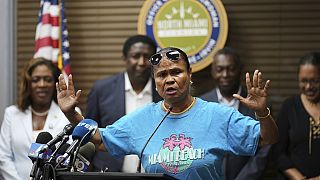

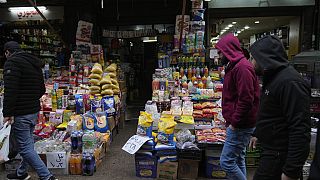
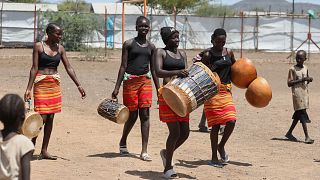
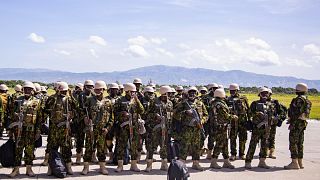
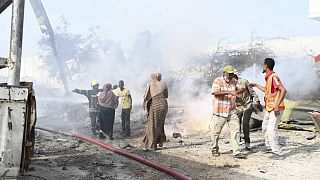

01:52
UN's crucial humanitarian aid work faces a clouded future amid cuts in funds
01:15
Morocco says 2024 was the hottest year with temperatures reaching 47.7 degrees
02:00
Refugees in Kenyan camp face hunger after USAID funding freeze
Go to video
A decade on, Lesbos still bears the scars of the refugee crisis
Go to video
Nigerian president orders crackdown on gangs after 150 killed in conflict-hit north
Go to video
South Sudan: UN warns of imminent famine